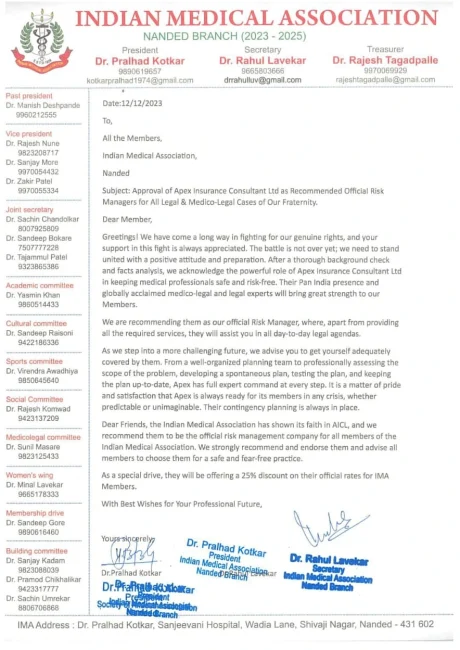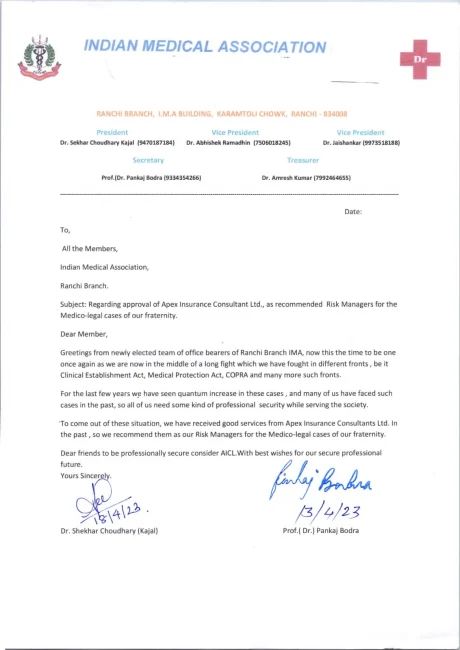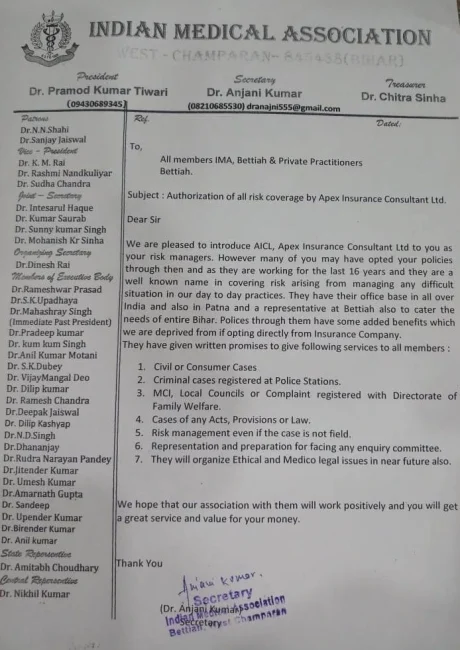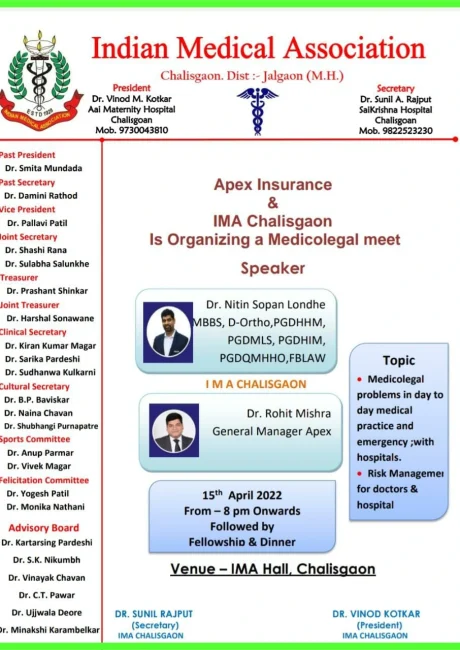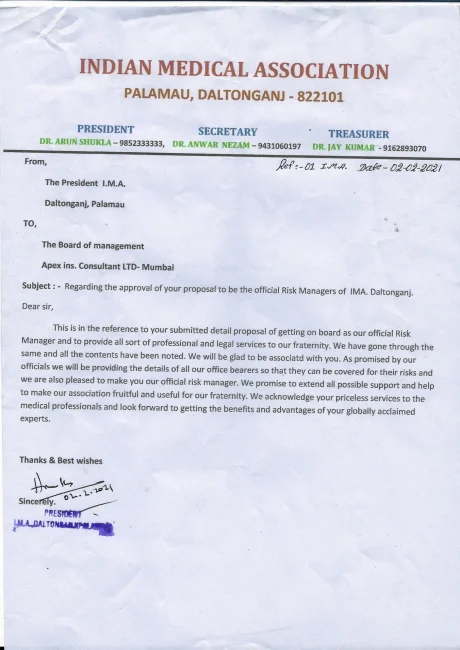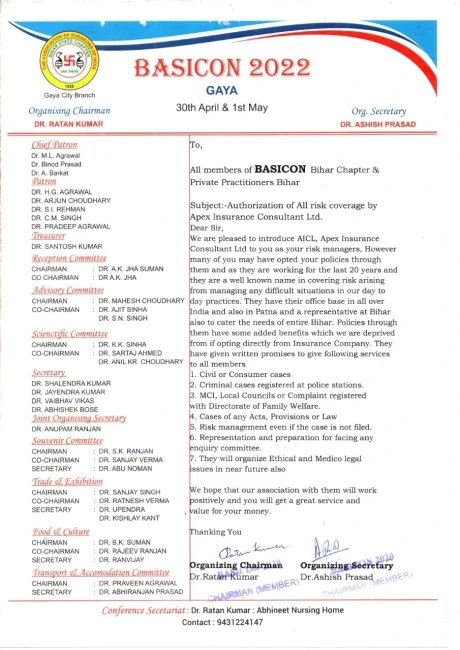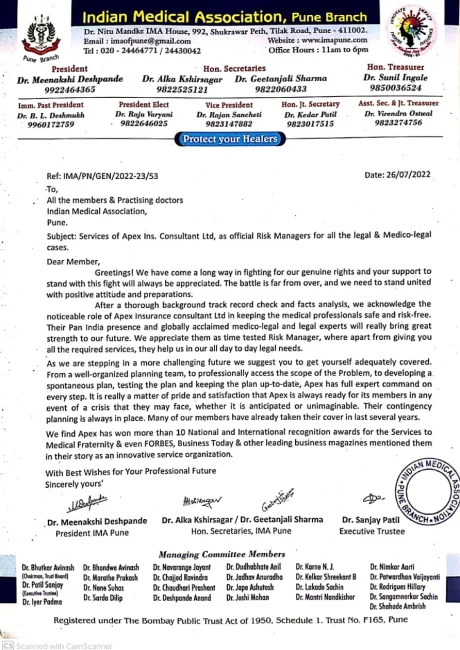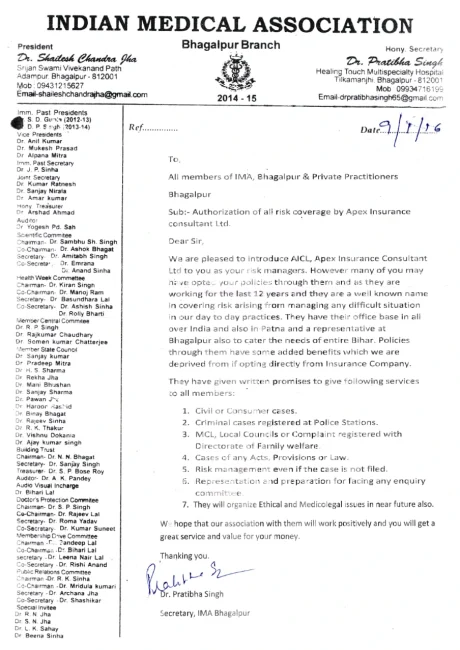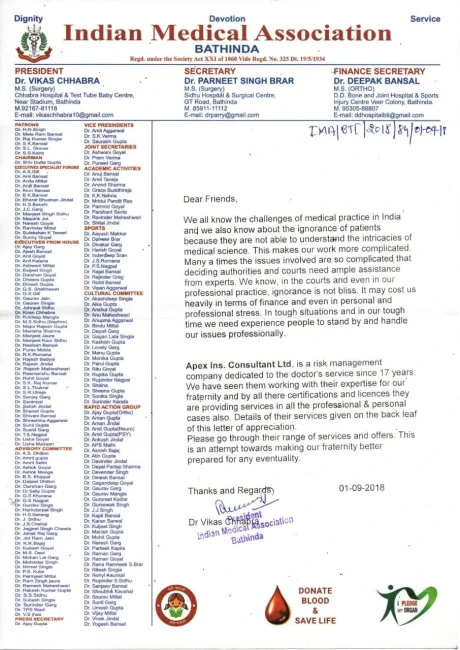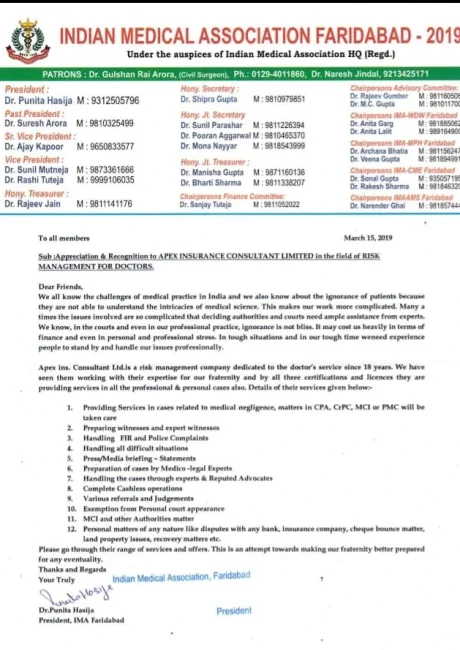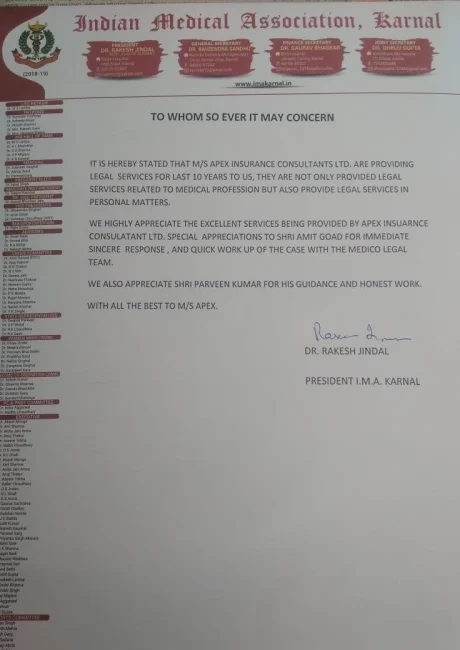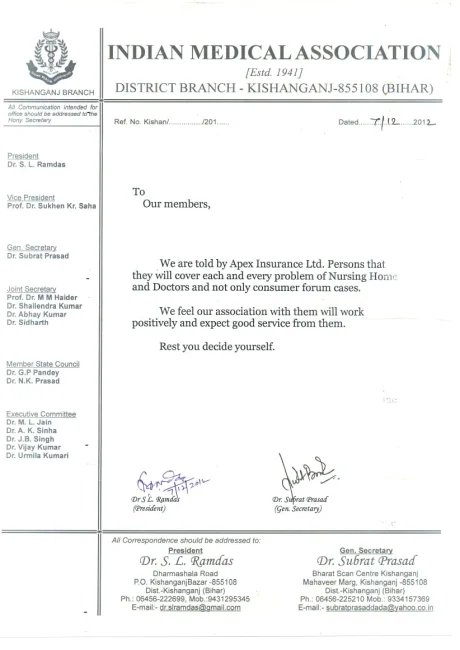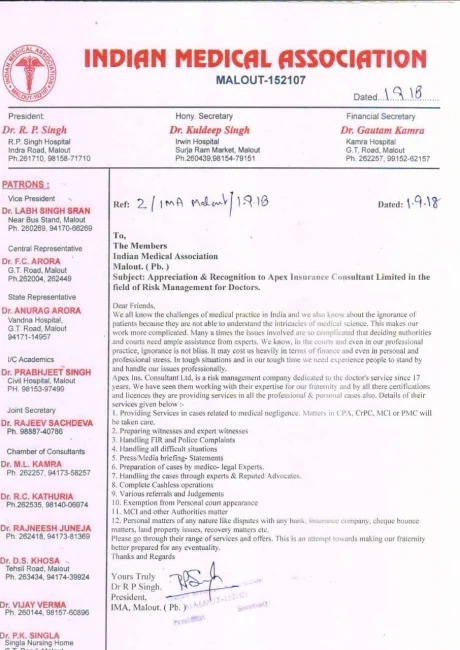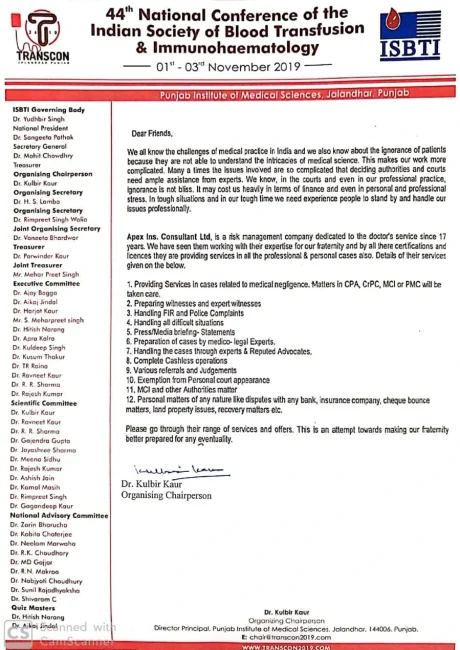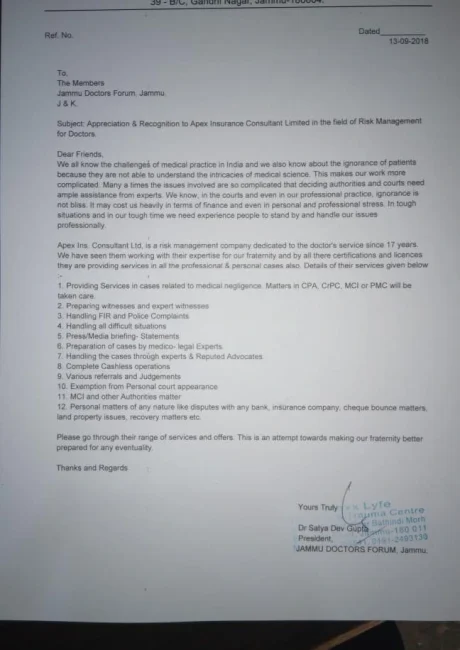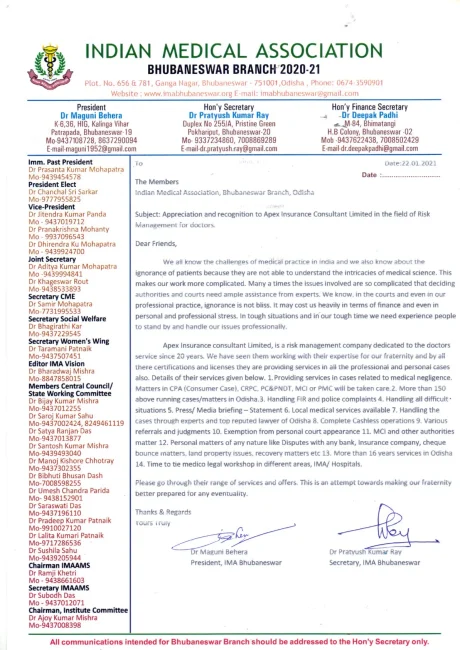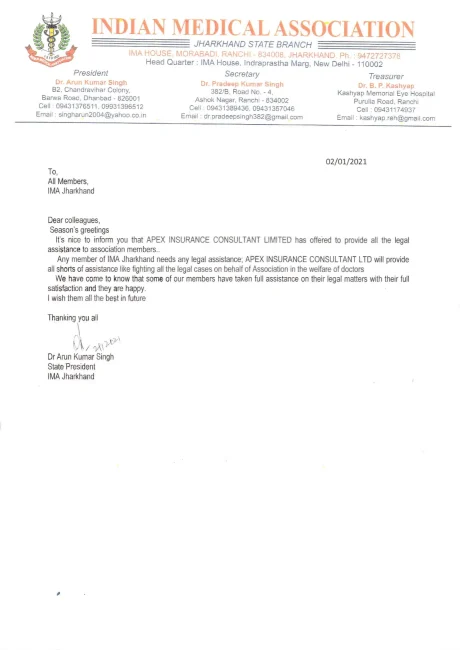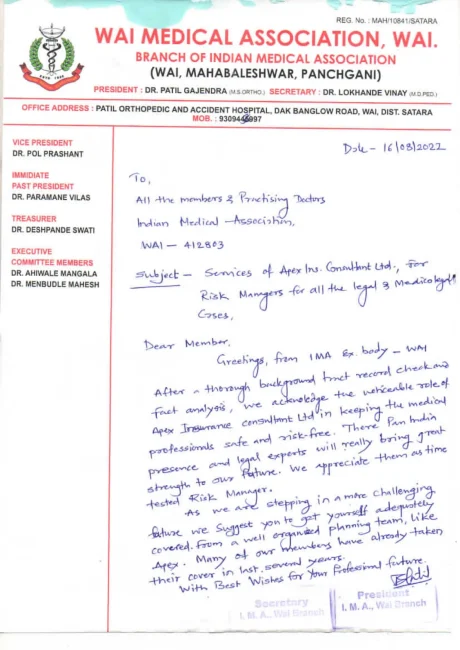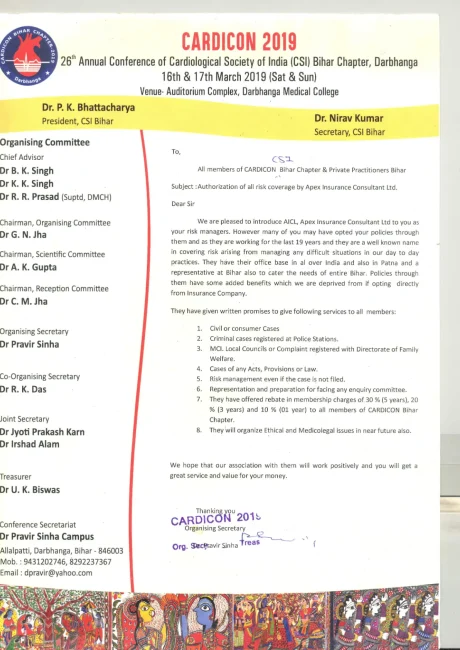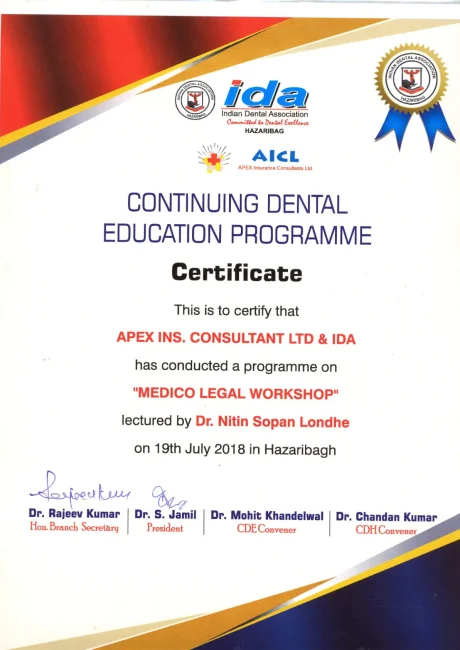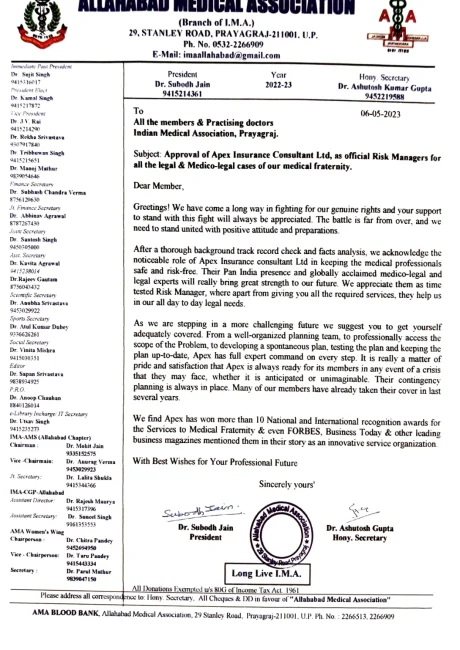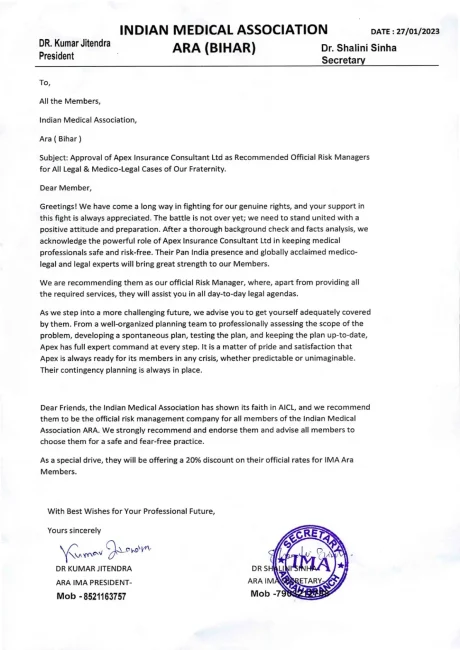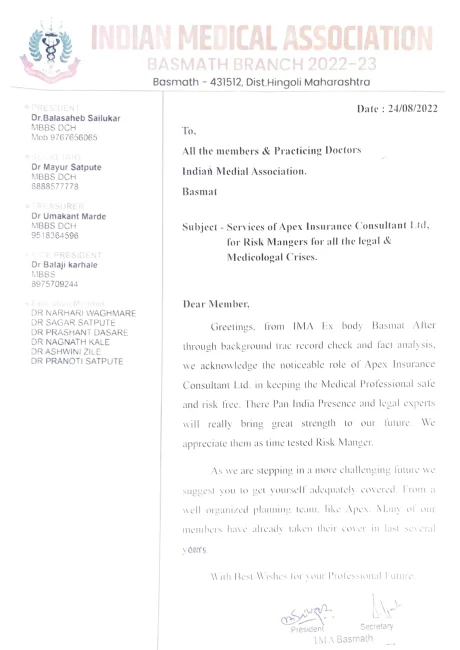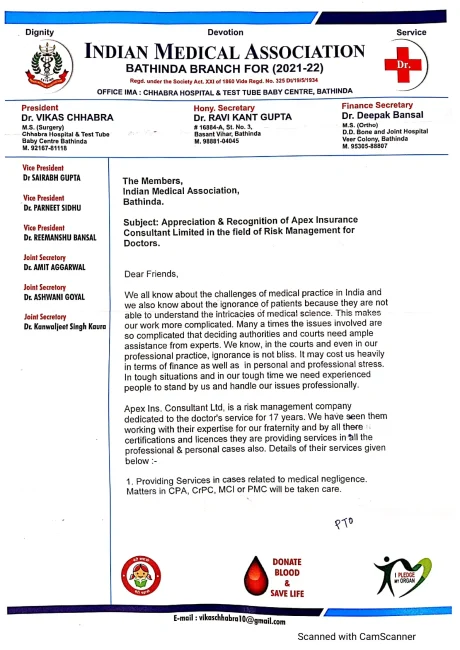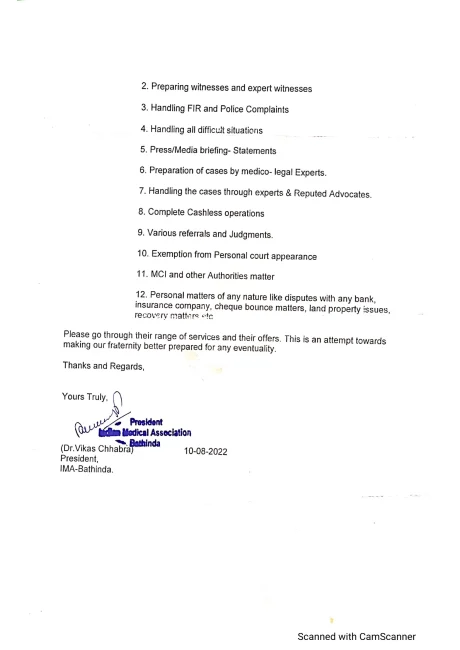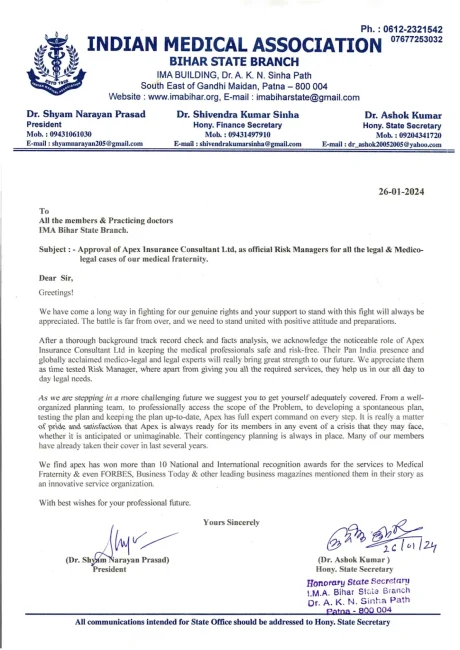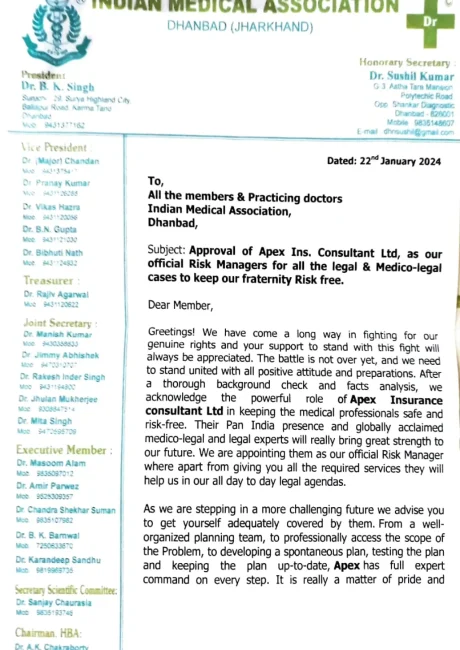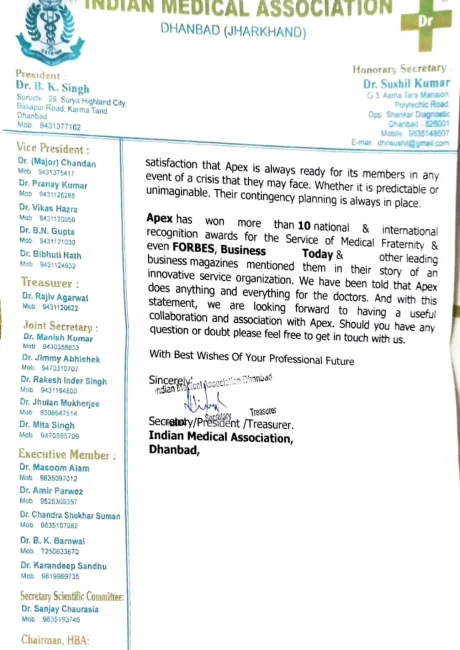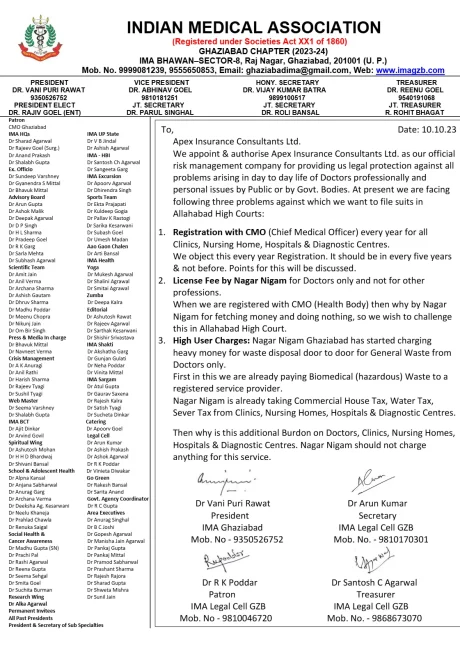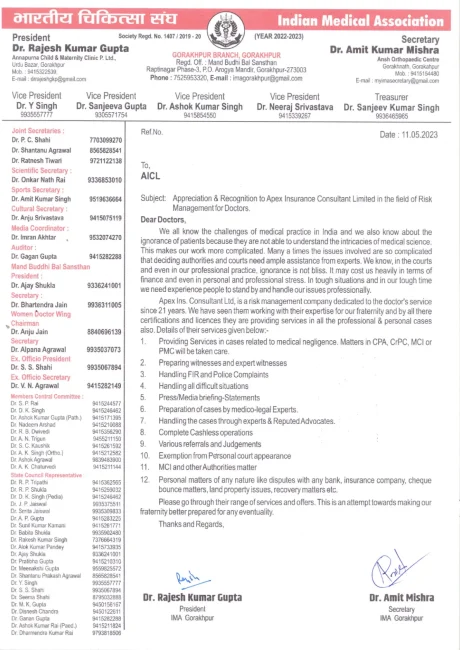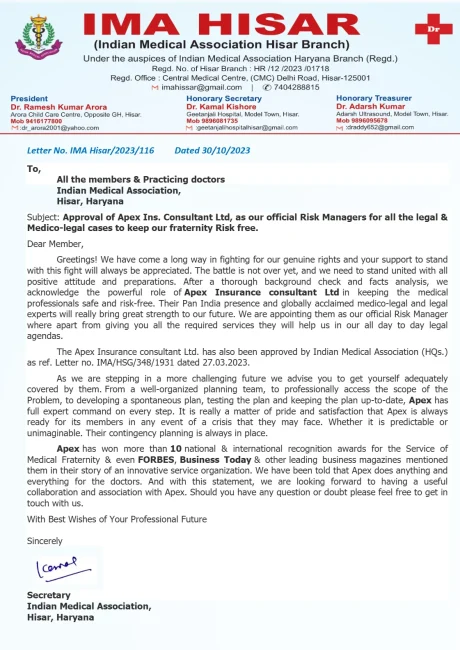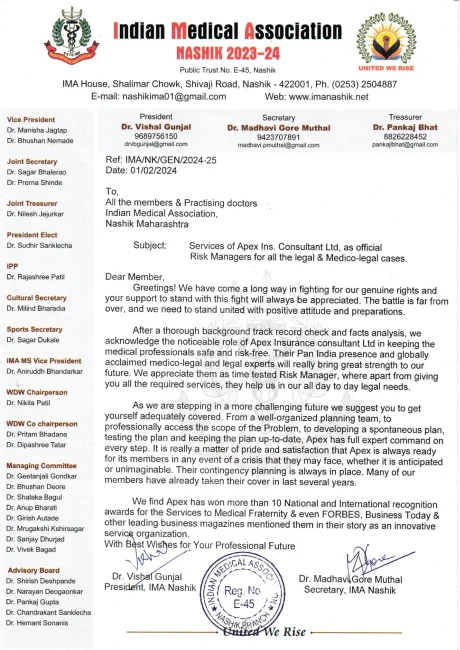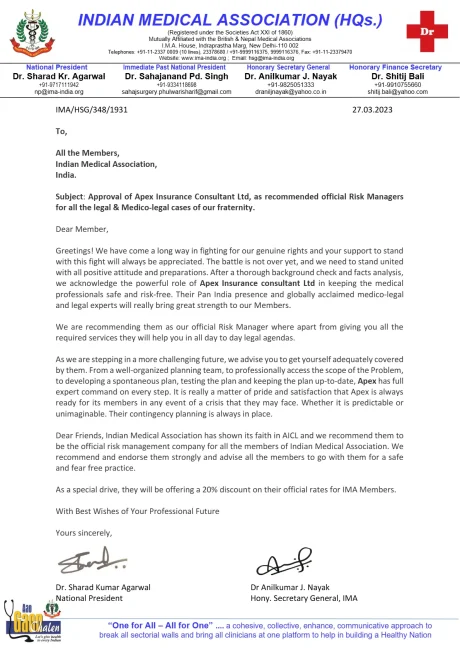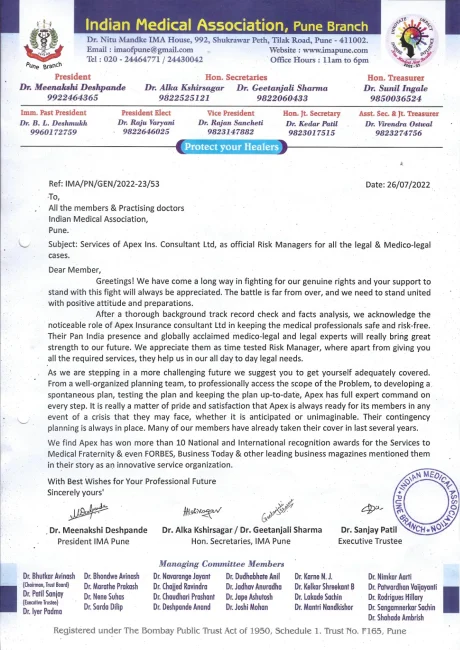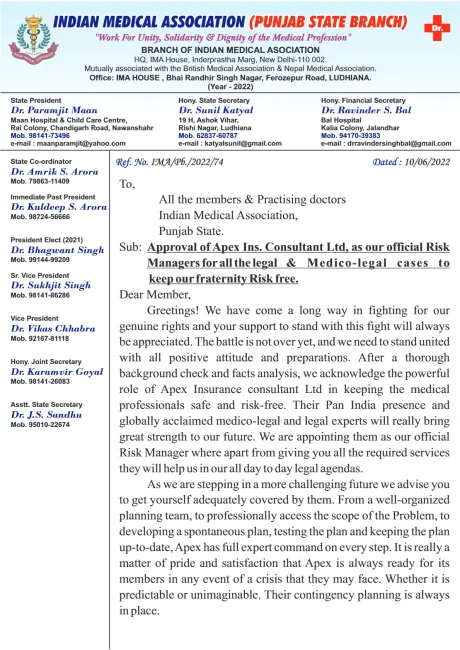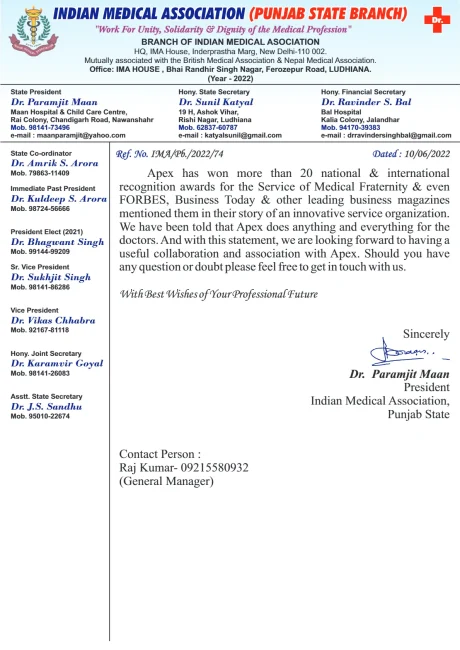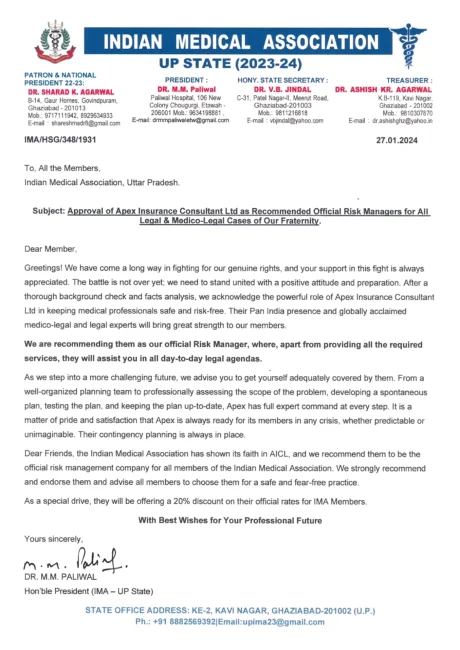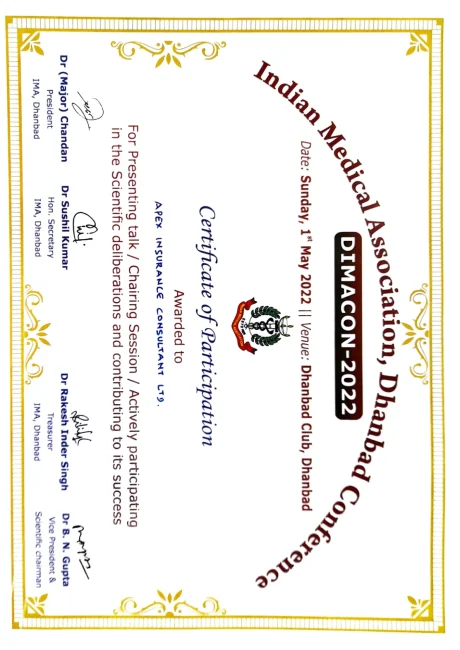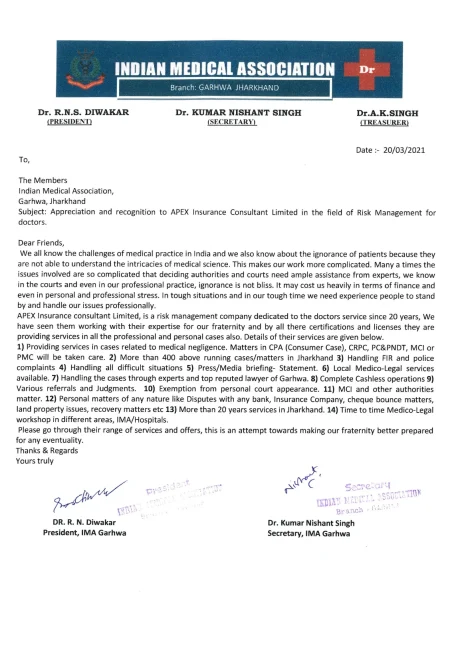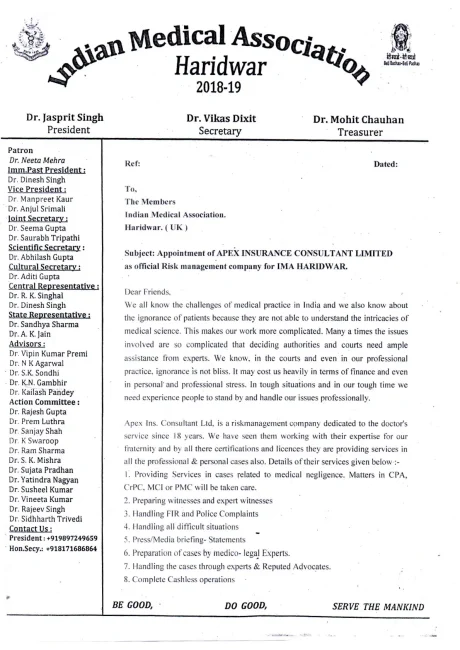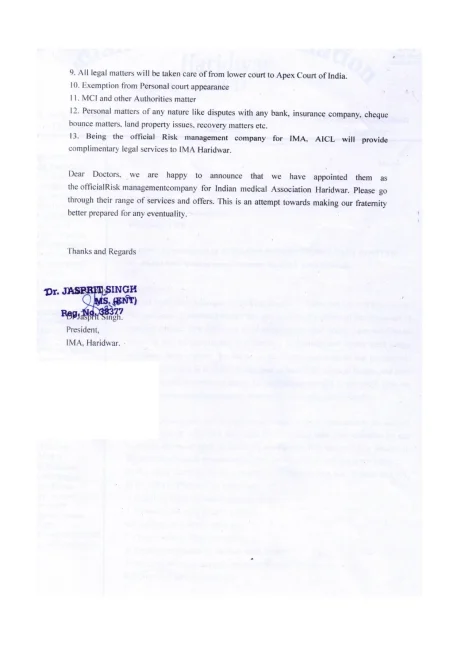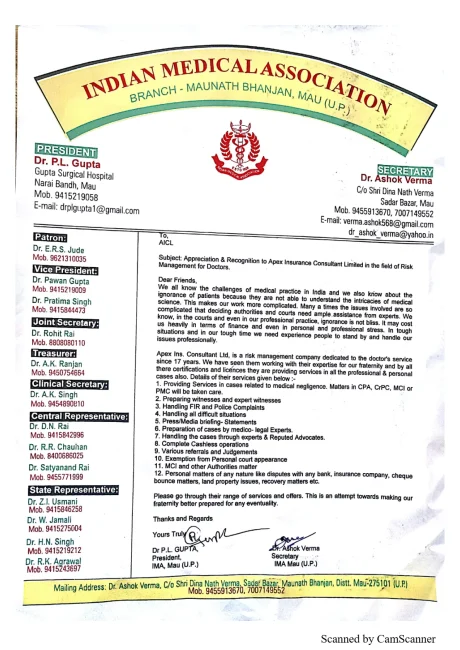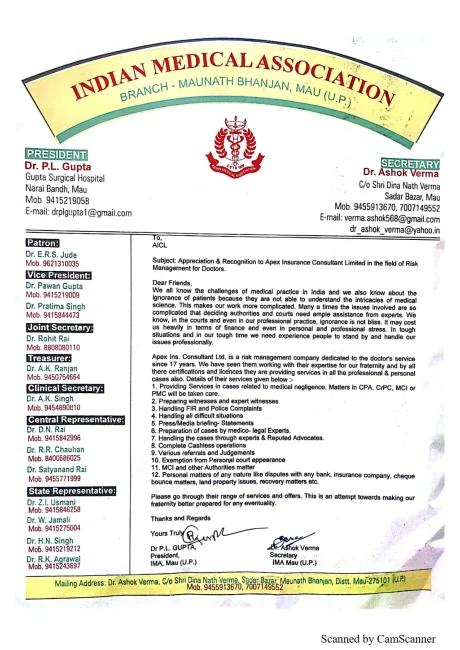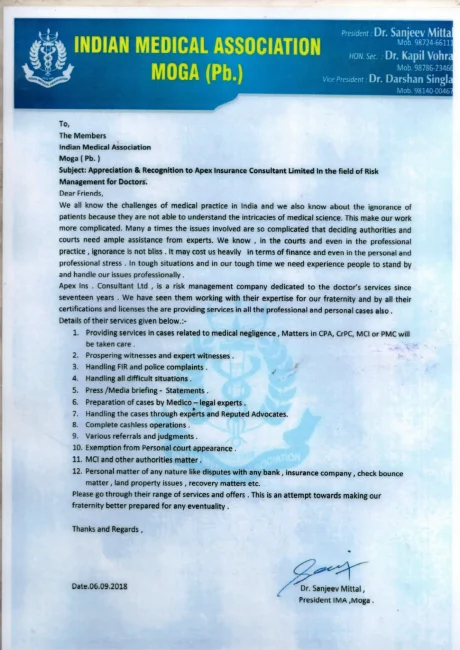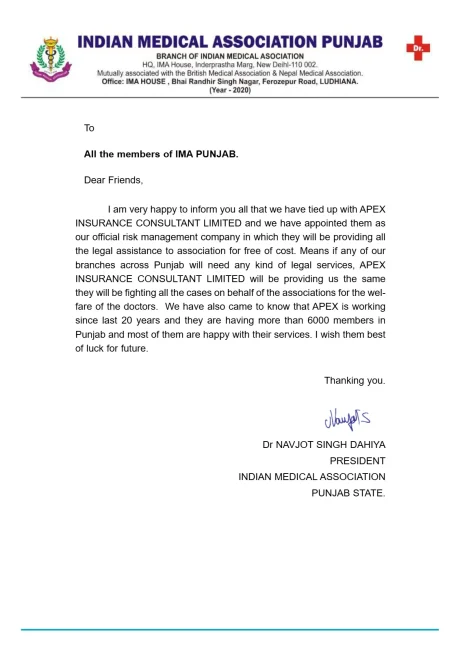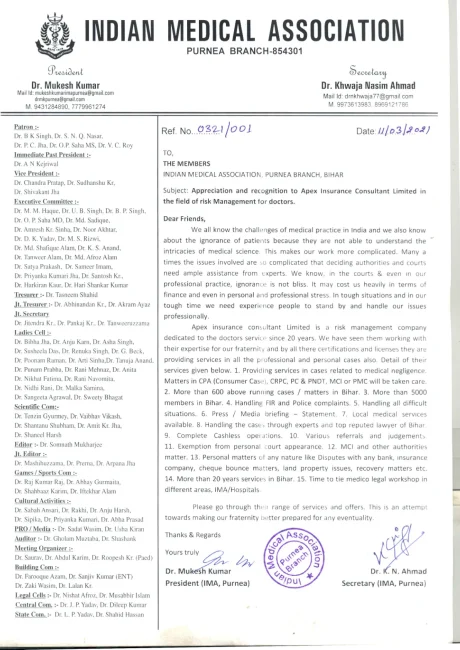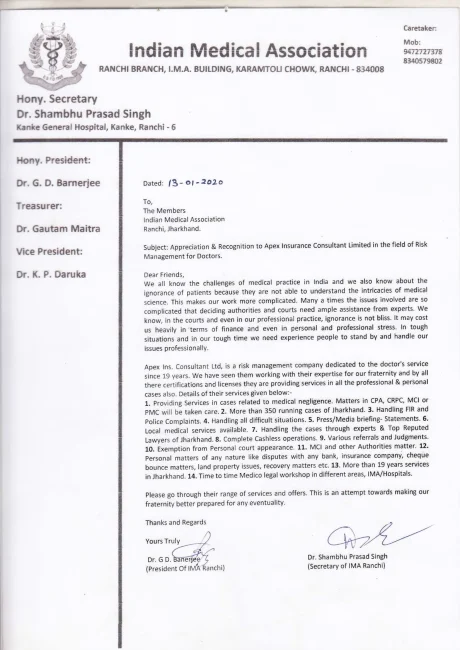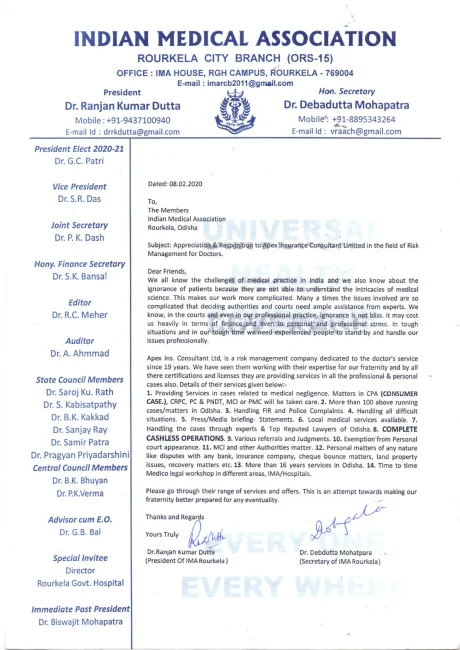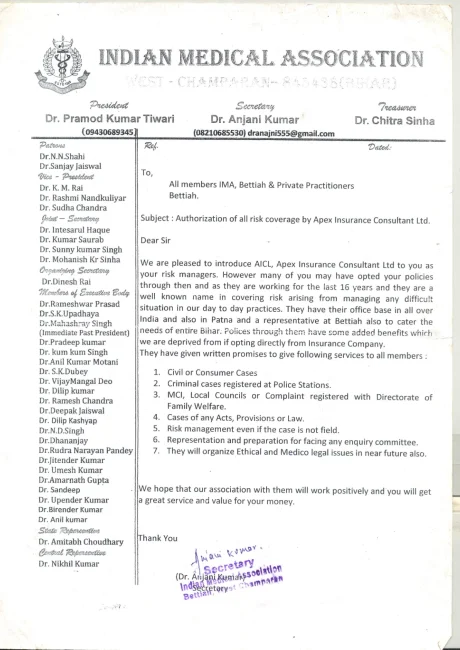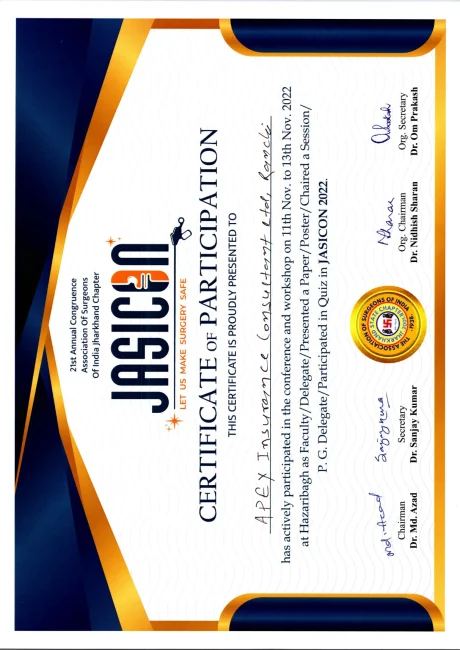Dr. Mahsh Baldwa,
MBBS, M.D,D.C.H, FIAP
MBA, LL.B,LL.M , Ph. D(law)
MEDICOLEGAL SPECIALIST & ADVISOR
Formerly Assistant Professor of Pediatrics at T.N. Medical College and Nair Hospital, Mumbai-400008
Ex. Asst. Professor JJ Hosp, Grant medical college
Professor, paper setter & examiner of law to postgraduate students of University Department of Law, University of Mumbai
Baldwa Hospital, Sumer Nagar,S.V. Road,
Borivali (West)Mumbai 400 092
Cell 09322990138
022-28050268
022-28056410
022-28659737
In The Supreme Court Of India, Criminal Original Jurisdiction, Writ Petition (Criminal) No. 115 OF 2009 related to Aruna Ramchandra Shanbaug v/s Union of India and others Was decided by Justice Markandey Katju and justice Gyan Sudha Misra’s bench on March 07, 2011 and summary of same is presented here with reference to euthanasia. Apex court observed that”It is alleged in the writ petition filed by Ms. Pinky Virani (claiming to be the next friend of Aruna Shanbaug,which also was declined by apex court and said only Nurses of KEM Hospital Mumbai who are caring for her can claim to next friend) that in fact Aruna Shanbaug is already dead and hence by not feeding her body any more we shall not be killing her.
SUMMARY OF THE INCIDENT:
Aruna Shanbaug was a staff Nurse working in King Edward Memorial Hospital, Parel, Mumbai. On the evening of 27th November, 1973 she was attacked by a sweeper in the hospital who wrapped a dog chain around her neck and yanked her back with it. He tried to rape her but finding that she was menstruating, he sodomized her. It is alleged that due to strangulation by the dog chain the supply of oxygen to the brain stopped and the brain got damaged. Since about 36 years Aruna Shanbaug (60 years of age) is permanent vegetative state (PVS).
IS ARUNA SHANBAUG IS BRAIN DEAD?
Apex court relied on “The Transplantation of Human Organs Act, 1994”, as per the definition of death in this act, it cannot be said that Aruna Shanbaug is dead. Apex court also relied on “Even from the report of Committee of Doctors which we have quoted above it appears that she has some brain activity, though very little.” From the above examination by the team of doctors, it cannot be said that Aruna Shanbaug is dead.
However, there appears little possibility of her coming out of permanent vegetative state (PVS), in which she is in. In all probability, she will continue to be in the state in which she is in till her death. The question now is whether her life support system (which is done by feeding her) should be withdrawn, and at whose instance?
EUTHANASIA
Euthanasia is one of the most perplexing issues which the courts and legislatures all over the world are facing today.
WHEN CAN A PERSON IS SAID TO BE DEAD
The question hence arises as to when a person can be said to be dead?
Apex court observed in para 108 and observed that “ Brain cells require regular supply of oxygen which comes through the red cells in the blood. If oxygen supply is cut off for more than six minutes, the brain cells die and this condition is known as anoxia. Hence, if the brain is dead a person is said to be dead.
Although in the case of Aruna Shanbhag Apex Court dealt with passive euthanasia in case of PVS, it would be of some interest to note the legislations in certain countries permitting active euthanasia. Apex court did describe active euthanasia practice in some countries but laid down guidelines for passive euthanasia alone in India till legislators take over and pass some law on euthanasia.
BRAIN DEATH
The term `brain death’ has developed various meanings. While initially, death could be defined as a cessation of breathing, or, more scientifically, a cessation of heart-beat, recent medical advances have made such definitions obsolete.
Brain death, may thus, be defined as “the irreversible cessation of all functions of the entire brain, including the brain stem”.
Brain death, thus, is different from a persistent vegetative state, where the brain stem continues to work, and so some degree of reactions may occur, though the possibility of regaining consciousness is relatively remote. Even when a person is incapable of any response, but is able to sustain respiration circulation, he cannot be said to be dead. The mere mechanical act of breathing, thus, would enable him or her to be “alive”.
In this connection we may refer to the Transplantation of Human Organs Act, 1994 enacted by the Indian Parliament. Section 2(d) of the Act states :”brain-stem death” means the stage at which all functions of the brain-stem have permanently and irreversibly ceased and is so certified under sub-section (6) of section 3:”
Section 3(6) of the said Act states: “(6) Where any human organ is to be removed from the body of a person in the event of his brain-stem death, no such removal shall be undertaken unless such death is certified, in such form and in such manner and on satisfaction of such conditions and requirements as may be prescribed, by a Board of medical experts consisting of the following, namely:- (i) the registered medical practitioner, in charge of the hospital in which brain-stem death has occurred; (ii) an independent registered medical practitioner, being a specialist, to be nominated by the registered medical practitioner specified in clause (i), from the panel of names approved by the Appropriate Authority; (iii) a neurologist or a neurosurgeon to be nominated by the registered medical practitioner specified in clause (i), from the panel of names approved by the Appropriate Authority; and (iv) the registered medical practitioner treating the person whose brain-stem death has occurred”.
LEGAL POSITION RELATED TO EUTHANASIA:
The general legal position all over the world seems to be that while active euthanasia is illegal unless there is legislation permitting it; passive euthanasia is legal even without legislation provided certain conditions and safeguards are maintained. The two types are defined as below:
ACTIVE EUTHANASIA:
Active euthanasia entails the use of lethal substances or forces to kill a person e.g. a lethal injection given to a person with terminal cancer who is in terrible agony.
PASSIVE EUTHANASIA:
Passive euthanasia entails withholding of medical treatment for continuance of life, e.g. withholding of antibiotics where without giving it a patient is likely to die, or removing the heart lung machine, from a patient in coma.
A further categorization of euthanasia is between voluntary euthanasia and non voluntary euthanasia.
VOLUNTARY EUTHANASIA
Voluntary euthanasia is where the consent is taken from the patient. there is no legal difficulty in the case of permitting Voluntary passive euthanasia.
NON VOLUNTARY EUTHANASIA
Non voluntary euthanasia is where the consent is unavailable e.g. When the patient is in coma, or is otherwise unable to give consent. Non voluntary passive euthanasia poses several problems and needs to be discussed.
ACTIVE EUTHANASIA
In India active euthanasia is illegal and a crime under section 302 or at least section 304 IPC. Physician assisted suicide is a crime under section 306 IPC (abetment to suicide)”
In para 43 the Apex court says “ A distinction is sometimes drawn between euthanasia and physician assisted dying, the difference being in who administers the lethal medication. In euthanasia, a physician or third party administers it, while in physician assisted suicide it is the patient himself who does it, though on the advice of the doctor. In many countries/States the latter is legal while the former is not.
In para 44 the Apex court says “The difference between “active” and “passive” euthanasia is that in active euthanasia, something is done to end the patient’s life’ while in passive euthanasia, something is not done that would have preserved the patient’s life.
In para 45 the Apex court says “An important idea behind this distinction is that in “passive euthanasia” the doctors are not actively killing anyone; they are simply not saving him. While we usually applaud someone who saves another person’s life, we do not normally condemn someone for failing to do so. If one rushes into a burning building and carries someone out to safety, he will probably be called a hero. But if one sees a burning building and people screaming for help, and he stands on the sidelines – whether out of fear for his own safety, or the belief that an inexperienced and ill-equipped person like himself would only get in the way of the professional firefighters, or whatever — if one does nothing, few would judge him for his inaction. One would surely not be prosecuted for homicide. (At least, not unless one started the fire in the first place.) “
LEGISLATION IN SOME COUNTRIES RELATING TO EUTHANASIA OR PHYSICIAN ASSISTED DEATH
ACTIVE EUTHANASIA
Netherlands:
Termination of Life on Request and Assisted Suicide (Review Procedures) Act took effect on April 1, 2002. It legalizes euthanasia and physician assisted suicide in very specific cases, under very specific circumstances.
Switzerland:
Switzerland seems to be the only country in which the law limits the circumstances in which assisted suicide is a crime, thereby decriminalizing it in other cases, without requiring the involvement of a physician. Consequently, non-physicians have participated in assisted suicide.
Belgium:
The Belgian law sets out conditions under which suicide can be practiced without giving doctors a licence to kill. Every mercy killing case will have to be filed at a special commission to decide if the doctors in charge are following the regulations.
Spain, Austria, Italy, Germany:
In none of these countries is euthanasia or physician assisted death legal.
France:
In January 2011 the French Senate defeated by a 170-142 vote a bill seeking to legalize euthanasia.
U.K.
In England, in May 2006 a bill allowing physician assisted suicide, was blocked, and never became law.
United States of America:
Active Euthanasia is illegal in all states in U.S.A., but physician assisted dying is legal in the states of Oregon, Washington and Montana. In no other States in U.S.A. is euthanasia or physician assisted death legal.
Canada:
In Canada, physician assisted suicide is illegal vide Section 241(b) of the Criminal Code of Canada.
The leading decision of the Canadian Supreme Court in this connection is Sue Rodriguez v. British Columbia (Attorney General), (1993) 3 SCR 519. Rodriguez, a woman of 43, was diagnosed with Amyotrophic Lateral Sclerosis (ALS), and requested the Canadian Supreme Court to allow someone to aid her in ending her life. By a 5 to 4 majority her plea was rejected.
PASSIVE EUTHANASIA
Passive euthanasia is usually defined as withdrawing medical treatment with a deliberate intention of causing the patient’s death. For example, if a patient requires kidney dialysis to survive, not giving dialysis although the machine is available, is passive euthanasia. Similarly, if a patient is in coma or on a heart lung machine, withdrawing of the machine will ordinarily result in passive euthanasia. Similarly not giving life saving medicines like antibiotics in certain situations may result in passive euthanasia. Denying food to a person in coma or PVS may also amount to passive euthanasia. As already stated above, euthanasia can be both voluntary or non voluntary. In voluntary passive euthanasia a person who is capable of deciding for himself decides that he would prefer to die (which may be for various reasons e.g., that he is in great pain or that the money being spent on his treatment should instead be given to his family who are in greater need, etc.), and for this purpose he consciously and of his own free will refuses to take life saving medicines. In India, if a person consciously and voluntarily refuses to take life saving medical treatment it is not a crime. Whether not taking food consciously and voluntarily with the aim of ending one’s life is a crime under section 309 IPC (attempt to commit suicide) is a question which need not be decided in this case. Non voluntary passive euthanasia implies that the person is not in a position to decide for himself e.g., if he is in coma or PVS. The present is a case where we have to consider non voluntary passive euthanasia i.e. whether to allow a person to die who is not in a position to give his/her consent.
CERTAIN LANDMARK DECISIONS RELATED TO PASSIVE EUTHANASIA:
THE AIREDALE CASE : (Airedale NHS Trust v. Bland (1993) All E.R. 82) (H.L.) In the Airedale case decided by the House of Lords in the U.K., the facts were that one Anthony Bland aged about 17 went to the Hillsborough Ground on 15th April 1989 to support the Liverpool Football Club. In the course of the disaster which occurred on that day, his lungs were crushed and punctured and the supply to his brain was interrupted. As a result, he suffered catastrophic and irreversible damage to the higher centres of the brain. For three years, he was in a condition known as `persistent vegetative state (PVS).
Lord Keith observed that although the decision whether or not the continued treatment and cure of a PVS patient confers any benefit on him is essentially one for the medical practitioners in charge of his case to decide, as a matter of routine the hospital/medical practitioner should apply to the Family Division of the High Court for endorsing or reversing the said decision. This is in the interest of the protection of the patient, protection of the doctors, and for the reassurance of the patient’s family and the public.
In Airdale’s case another Judge on the Bench, Lord Goff of Chievely observed
In a Discussion Paper on Treatment of Patients in Persistent Vegetative State issued in September 1992 by the Medical Ethics Committee of the British Medical Association certain safeguards were mentioned which should be observed before constituting life support for such patients:- “(1) Every effort should be made at rehabilitation for at least six months after the injury; (2) The diagnosis of irreversible PVS should not be considered confirmed until at least twelve months after the injury, with the effect that any decision to withhold life prolonging treatment will be delayed for that period; (3) The diagnosis should be agreed by two other independent doctors; and (4) Generally, the wishes of the patient’s immediate family will be given great weight.”
Lord Goff observed that discontinuance of artificial feeding in such cases is not equivalent to cutting a mountaineer’s rope, or severing the air pipe of a deep sea diver. The true question is not whether the doctor should take a course in which he will actively kill his patient, but rather whether he should continue to provide his patient with medical treatment or care which, if continued, will prolong his life.
Lord Browne-Wilkinson was of the view that removing the nasogastric tube in the case of Anthony Bland cannot be regarded as a positive act causing the death. The tube itself, without the food being supplied through it, does nothing. Its non removal itself does not cause the death since by itself, it does not sustain life. Hence removal of the tube would not constitute the actus reus of murder, since such an act would not cause the death.
Lord Mustill observed:- “Threaded through the technical arguments addressed to the House were the strands of a much wider position, that it is in the best interests of the community at large that Anthony Bland’s life should now end. The doctors have done all they can. Nothing will be gained by going on and much will be lost. The distress of the family will get steadily worse. The strain on the devotion of a medical staff charged with the care of a patient whose condition will never improve, who may live for years and who does not even recognize that he is being cared for, will continue to mount. The large resources of skill, labour and money now being devoted to Anthony Bland might in the opinion of many be more fruitfully employed in improving the condition of other patients, who if treated may have useful, healthy and enjoyable lives for years to come.”
Thus all the Judges of the House of Lords in the Airedale case were agreed that Anthony Bland should be allowed to die. Airedale (1993) decided by the House of Lords has been followed in a number of cases in U.K., and the law is now fairly well settled that in the case of incompetent patients, if the doctors act on the basis of informed medical opinion, and withdraw the artificial life support system if it is in the patient’s best interest, the said act cannot be regarded as a crime. The question, however, remains as to who is to decide what is the patient’s best interest where he is in a persistent vegetative state (PVS)? Most decisions have held that the decision of the parents, spouse, or other close relative, should carry weight if it is an informed one, but it is not decisive (several of these decisions have been referred to in Chapter IV of the 196th Report of the Law Commission of India on Medical Treatment to Terminally ill Patients).
It is ultimately for the Court to decide, as parens patriae, as to what is in the best interest of the patient, though the wishes of close relatives and next friend, and opinion of medical practitioners should be given due weight in coming to its decision. As stated by Balcombe, J. in In Re J ( A Minor Wardship : Medical Treatment) 1990(3) All E.R. 930, the Court as representative of the Sovereign as parens patriae will adopt the same standard which a reasonable and responsible parent would do.
The parens patriae (father of the country) jurisdiction was the jurisdiction of the Crown, which, as stated in Airedale, could be traced to the 13th Century. This principle laid down that as the Sovereign it was the duty of the King to protect the person and property of those who were unable to protect themselves. The Court, as a wing of the State, has inherited the parens patriae jurisdiction which formerly belonged to the King U.S. decisions
The two most significant cases of the U.S. Supreme Court that addressed the issue whether there was a federal constitutional right to assisted suicide arose from challenges to State laws banning physician assisted suicide brought by terminally ill patients and their physicians. These were Washington vs. Glucksberg 521 U.S. 702 (1997) and Vacco vs. Quill 521 U.S. 793 (1997).
In Glucksberg’s case, the U.S. Supreme Court held that the asserted right to assistance in committing suicide is not a fundamental liberty interest protected by the Due Process Clause of the Fourteenth Amendment.
In Vacco’s case the U.S. Supreme Court again recognized the
distinction between refusing life saving medical treatment and giving lethal medication.
In Cruzan v. Director, MDH, 497 U.S. 261(1990) decided by the U.S. Supreme Court the majority opinion was delivered by the Chief Justice Rehnquist, while delivering the opinion of the Court (in which Justices White, O’Connor, Scalia, and Kennedy, joined) in his judgment first noted the facts:-
“On the night of January 11, 1983, Nancy Cruzan lost control of her car as she traveled down Elm Road in Jasper County, Missouri. The vehicle overturned, and Cruzan was discovered lying face down in a ditch without detectable respiratory or cardiac function. The Missouri trial court in this case found that permanent brain damage generally results after 6 minutes in an anoxic state; it was estimated that Cruzan was deprived of oxygen from 12 to 14 minutes. In order to ease feeding and further the recovery, surgeons implanted a gastrostomy feeding and hydration tube in Cruzan with the consent of her then husband. She now lies in a Missouri state hospital in what is commonly referred to as a persistent vegetative state. The State of Missouri is bearing the cost of her care. All agree that such removal would cause her death. The employees refused to honor the request without court approval. The parents then sought and received authorization from the state trial court for termination.” While the trial Court allowed the petition the State Supreme Court of Missouri reversed. The US Supreme Court by majority affirmed the verdict of the State Supreme Court.
As observed by Justice Cardozo, while on the Court of Appeals of New York “Every human being of adult years and sound mind has a right to determine what shall be done with his own body, and a surgeon who performs an operation without his patient’s consent commits an assault, for which he is liable in damages.” vide Schloendorff vs. Society of New York Hospital, 211 N.Y. 125, 129-30, 105 N.E. 92, 93 (1914). Thus the informed consent doctrine has become firmly entrenched in American Tort Law.
The logical corollary of the doctrine of informed consent is that the patient generally possesses the right not to consent, that is to refuse treatment. The question, however, arises in cases where the patient is unable to decide whether the treatment should continue or not e.g. if he is in coma or PVS. Who is to give consent to terminate the treatment in such a case? The learned Chief Justice referred to a large number of decisions of Courts in U.S.A. in this connection, often taking diverse approaches.
In re Quinlan 70 N.J.10, 355 A. 2d 647, Karen Quinlan suffered severe brain damage as a result of anoxia, and entered into PVS. Her father sought judicial approval to disconnect her respirator. The New Jersey Supreme Court granted the prayer, holding that Karen had a right of privacy grounded in the U.S. Constitution to terminate treatment. The Court concluded that the way Karen’s right to privacy could be exercised would be to allow her guardian and family to decide whether she would exercise it in the circumstances.
In re Conroy 98 NJ 321, 486 A.2d 1209 (1985), however, the New Jersey Supreme Court, in a case of an 84 year old incompetent nursing home resident who had suffered irreversible mental and physical ailments, contrary to its decision in Quinlan’s case, decided to base its decision on the common law right to self determination and informed consent. This right can be exercised by a surrogate decision maker when there was a clear evidence that the incompetent person would have exercised it. Where such evidence was lacking the Court held that an individual’s right could still be invoked in certain circumstances under objective `best interest’ standards. Where no trustworthy evidence existed that the individual would have wanted to terminate treatment, and a person’s suffering would make the administration of life sustaining treatment inhumane, a pure objective standard could be used to terminate the treatment. If none of these conditions obtained, it was best to err in favour of preserving life.
What is important to note in Cruzan’s case is that there was a statute of the State of Missouri, unlike in Airedale’s case (where there was none), which required clear and convincing evidence that while the patient was competent she had desired that if she becomes incompetent and in a PVS her life support should be withdrawn.
In Cruzan’s case the learned Chief Justice observed : “Not all incompetent patients will have loved ones available to serve as surrogate decision makers. And even where family members are present, there will be, of course, some unfortunate situations in which family members will not act to protect a patient. A State is entitled to guard against potential abuses in such
situations.”
The learned Chief Justice further observed : “An erroneous decision not to terminate results in maintenance of the status quo; the possibility subsequent developments such as advancements in medical science, the discovery of new evidence regarding the patient’s intent, changes in the law, or simply the unexpected death of the patient despite the administration of life-sustaining treatment, at least create the potential that a wrong decision will eventually be corrected or its
impact mitigated. An erroneous decision to withdraw life-sustaining treatment, however, is not susceptible of correction.”
No doubt Mr. Justice Brennan (with whom Justices Marshall Blackmun joined) wrote a powerful dissenting opinion, but it is not necessary for us to go into the question whether the view of the learned Chief Justice or that of Justice Brennan, is correct.
Apex court of India observed that Cruzan’s case can be distinguished on the simple ground that there was a statute in the State of Missouri, whereas there was none in the Airedale’s case nor in the present case before us. We are, therefore, of the opinion that the Airedale’s case is more apposite as a precedent for us. No doubt foreign decisions are not binding on us, but they certainly have persuasive value.
LAW IN INDIA
In India abetment of suicide (Section 306 Indian Penal Code) and attempt to suicide (Section 309 of Indian Penal Code) are both criminal offences. This is in contrast to many countries such as USA where attempt to suicide is not a crime.
The Constitution Bench of the Indian Supreme Court in Gian Kaur vs. State of Punjab, 1996(2) SCC 648 held that both euthanasia and assisted suicide are not lawful in India. That decision overruled the earlier two Judge Bench decision of the Supreme Court in P. Rathinam vs. Union of India, 1994(3) SCC 394. The Court held that the right to life under Article 21 of the Constitution does not include the right to die (vide para 33). In Gian Kaur’s case the Supreme Court approved of the decision of the House of Lords in Airedale’s case , and observed that euthanasia could be made lawful only by legislation.
Sections 306 and 309 IPC read as under “306. Abetment of suicide – If any person commits suicide, whoever abets the commission of such suicide, shall be punished with imprisonment of either description for a term which may extend to ten years, and shall also be liable to fine.
309. Attempt to commit suicide – Whoever attempts to commit suicide and does any act towards the commission of such offence, shall be punished with simple imprisonment for a term which may extend to one year or with fine, or with both.”
Apex court said “We are of the opinion that although Section 309 Indian Penal Code (attempt to commit suicide) has been held to be constitutionally valid in Gian Kaur’s case , the time has come when it should be deleted by Parliament as it has become anachronistic. A person attempts suicide in a depression, and hence he needs help, rather than punishment. We therefore recommend to Parliament to consider the feasibility of deleting Section 309 from the Indian Penal Code.”
Apex court further said” It may be noted that in Gian Kaur’s case although the Supreme Court has quoted with approval the view of the House of Lords in Airedale’s case , it has not clarified who can decide whether life support should be discontinued in the case of an incompetent person e.g. a person in coma or PVS. This vexed question has been arising often in India because there are a large number of cases where persons go into coma (due to an accident or some other reason) or for some other reason are unable to give consent, and then the question arises as to who should give consent for withdrawal of life support. This is an extremely important question in India because of the unfortunate low level of ethical standards to which our society has descended, its raw and widespread commercialization, and the rampant corruption, and hence, the Court has to be very cautious that unscrupulous persons who wish to inherit the property of someone may not get him eliminated by some crooked method. Also, since medical science is advancing fast, doctors must not declare a patient to be a hopeless case unless there appears to be no reasonable possibility of any improvement by some newly discovered medical method in the near future. In this connection we may refer to a recent news item which we have come across on the internet of an Arkansas man Terry Wallis, who was 19 years of age and newly married with a baby daughter when in 1984 his truck plunged through a guard rail, falling 25 feet. He went into coma in the crash in 1984, but after 24 years he has regained consciousness. This was perhaps because his brain spontaneously rewired itself by growing tiny new nerve connections to replace the ones sheared apart in the car crash. Probably the nerve fibers from Terry Wallis’ cells were severed but the cells themselves remained intact, unlike Terri Schiavo, whose brain cells had died (see Terri Schiavo’s case on Google).
Apex court in par 104 said “ However, we make it clear that it is experts like medical practitioners who can decide whether there is any reasonable possibility of a new medical discovery which could enable such a patient to revive in the near future.”
WITHDRAWAL OF LIFE SUPPORT OF A PATIENT IN
PERMANENT VEGETATIVE STATE (PVS)
Apex court observed “There is no statutory provision in our country as to the legal procedure for withdrawing life support to a person in PVS or who is otherwise incompetent to take a decision in this connection.”
We agree with Mr. Andhyarujina that passive euthanasia should be permitted in our country in certain situations, and we disagree with the learned Attorney General that it should never be permitted.
We are laying down the law in this connection which will continue to be the law until Parliament makes a law on the subject.
(i) A decision has to be taken to discontinue life support either by the parents or the spouse or other close relatives, or in the absence of any of them, such a decision can be taken even by a person or a body of persons acting as a next friend. It can also be taken by the doctors attending the patient However, the decision should be taken bona fide in the best interest of the patient.
(ii) Hence, even if a decision is taken by the near relatives or doctors or next friend to withdraw life support, such a decision requires approval from the High Court concerned as laid down in Airedale’s case . In our opinion, this is even more necessary in our country as we cannot rule out the possibility of mischief being done by relatives or others for inheriting the property of the patient.
Apex court observed “In our opinion, if we leave it solely to the patient’s relatives or to the doctors or next friend to decide whether to withdraw the life support of an incompetent person there is always a risk in our country that this may be misused by some unscrupulous persons who wish to inherit or otherwise grab the property of the patient. Considering the low ethical levels prevailing in our society today and the rampant commercialization and corruption, we cannot rule out the possibility that unscrupulous persons with the help of some unscrupulous doctors may fabricate material to show that it is a terminal case with no chance of recovery. There are doctors and doctors. While many doctors are upright, there are others who can do anything for money (see George Bernard Shaw’s play `The Doctors Dilemma’). The commercialization of our society has crossed all limits. Hence we have to guard against the potential of misuse (see Robin Cook’s novel `Coma’). In our opinion, while giving great weight to the wishes of the parents, spouse, or other close relatives or next friend of the incompetent patient and also giving due weight to the opinion of the attending doctors, we cannot leave it entirely to their discretion whether to discontinue the life support or not. We agree with the decision of the Lord Keith in Airedale’s case that the approval of the High Court should be taken in this connection. This is in the interest of the protection of the patient, protection of the doctors, relative and next friend, and for reassurance of the patient’s family as well as the public. This is also in consonance with the doctrine of parens patriae which is a well known principle of law.
In our opinion, in the case of an incompetent person who is unable to take a decision whether to withdraw life support or not, it is the Court alone, as parens patriae, which ultimately must take this decision, though, no doubt, the views of the near relatives, next friend and doctors must be given due weight.
UNDER WHICH PROVISION OF THE LAW CAN THE COURT GRANT APPROVAL FOR WITHDRAWING LIFE SUPPORT TO AN INCOMPETENT PERSON
In Apex Court’s opinion, it is the High Court under Article 226 of the Constitution which can grant approval for withdrawal of life support to such an incompetent person. Article 226(1) of the Constitution states :”Notwithstanding anything in article 32, every High Court shall have power, throughout the territories in relation to which it exercises jurisdiction, to issue to any person or authority, including in appropriate cases, any Government, within those territories directions, orders or writs, including writs in the nature of habeas corpus, mandamus, prohibition, quo warranto and certiorari, or any of them, for the enforcement of any of the rights conferred by Part III and for any other purpose”.
LAW IN INDIA HAVING IMPLICATION IN MERCY DEATH
| Laws/judgments | Main theme | Punishment /improvement |
| Section 306 IPC | abetment of suicide | If any person commits suicide, whoever abets the commission of such suicide, shall be punished with imprisonment of either description for a term which may extend to ten years, and shall also be liable to fine. |
| Section 309 of IPC | attempt to suicide | Attempt to commit suicide – Whoever attempts to commit suicide and does any act towards the commission of such offence, shall be punished with simple imprisonment for a term which may extend to one year or with fine, or with both.” |
| P.Rathinam vs. Union of India, 1994(3) SCC 394. | right to life under Article 21 of the Constitution does not include the right to die | Suicide and its abetment illegal |
| Gian Kaur vs. State of Punjab, 1996(2) SCC 648 | Both euthanasia and assisted suicide are not lawful in India. | In Gian Kaur’s case the Supreme Court approved of the decision of the House of Lords in Airedale’s case , and observed that euthanasia could be made lawful only by legislation. |
| Aruna Shanbaug case | The time has come when s. 309 should be deleted by Parliament as it has become anachronistic. | A person attempts suicide in a depression, and hence he needs help, rather than punishment. We therefore recommend to Parliament to consider the feasibility of deleting Section 309 from the Indian Penal Code |
| Medical council ethics 2002, rule 6.7 | Practicing euthanasia shall constitute unethical conduct. | Erasure of name from medical council |
PASSIVE EUTHANASIA PROCEDURE AS LAIN DOWN IN ARUNA SHANBAUG CASE
| PROCEDURE TO BE ADOPTED BY THE HIGH COURT WHEN SUCH AN APPLICATION IS FILED A decision has to be taken to discontinue life support either by the parents or the spouse or other close relatives, or in the absence of any of them, such a decision can be taken even by a person or a body of persons acting as a next friend. It can also be taken by the doctors attending the patient However, the decision should be taken bona fide in the best interest of the patient. Hence, even if a decision is taken by the near relatives or doctors or next friend to withdraw life support, such a decision requires approval from the High Court concerned as laid down in Airedale’s case . In our opinion, this is even more necessary in our country as we cannot rule out the possibility of mischief being done by relatives or others for inheriting the property of the patient.When such an application is filed the Chief Justice of the High Court should forthwith constitute a Bench of at least two Judges who should decide to grant approval or not. Before doing so the Bench should seek the opinion of a committee of three reputed doctors to be nominated by the Bench after consulting such medical authorities/medical practitioners as it may deem fit. Preferably one of the three doctors should be a neurologist; one should be a psychiatrist, and the third a physician. For this purpose a panel of doctors in every city may be prepared by the High Court in consultation with the State Government /Union Territory and their fees for this purpose may be fixed. The committee of three doctors nominated by the Bench should carefully examine the patient and also consult the record of the patient as well as taking the views of the hospital staff and submit its report to the High Court Bench. Simultaneously with appointing the committee of doctors, the High Court Bench shall also issue notice to the State and close relatives e.g. parents, spouse, brothers/sisters etc. of the patient, and in their absence his/her next friend, and supply a copy of the report of the doctor’s committee to them as soon as it is available. After hearing them, the High Court bench should give its verdict. The above procedure should be followed all over India until Parliament makes legislation on this subject. The High Court should give its decision speedily at the earliest, since delay in the matter may result in causing great mental agony to the relatives and persons close to the patient.The High Court should give its decision assigning specific reasons in accordance with the principle of `best interest of the patient’ laid down by the House of Lords in Airedale’s case. The views of the near relatives and committee of doctors should be given due weight by the High Court before pronouncing a final verdict which shall not be summary in nature. |

